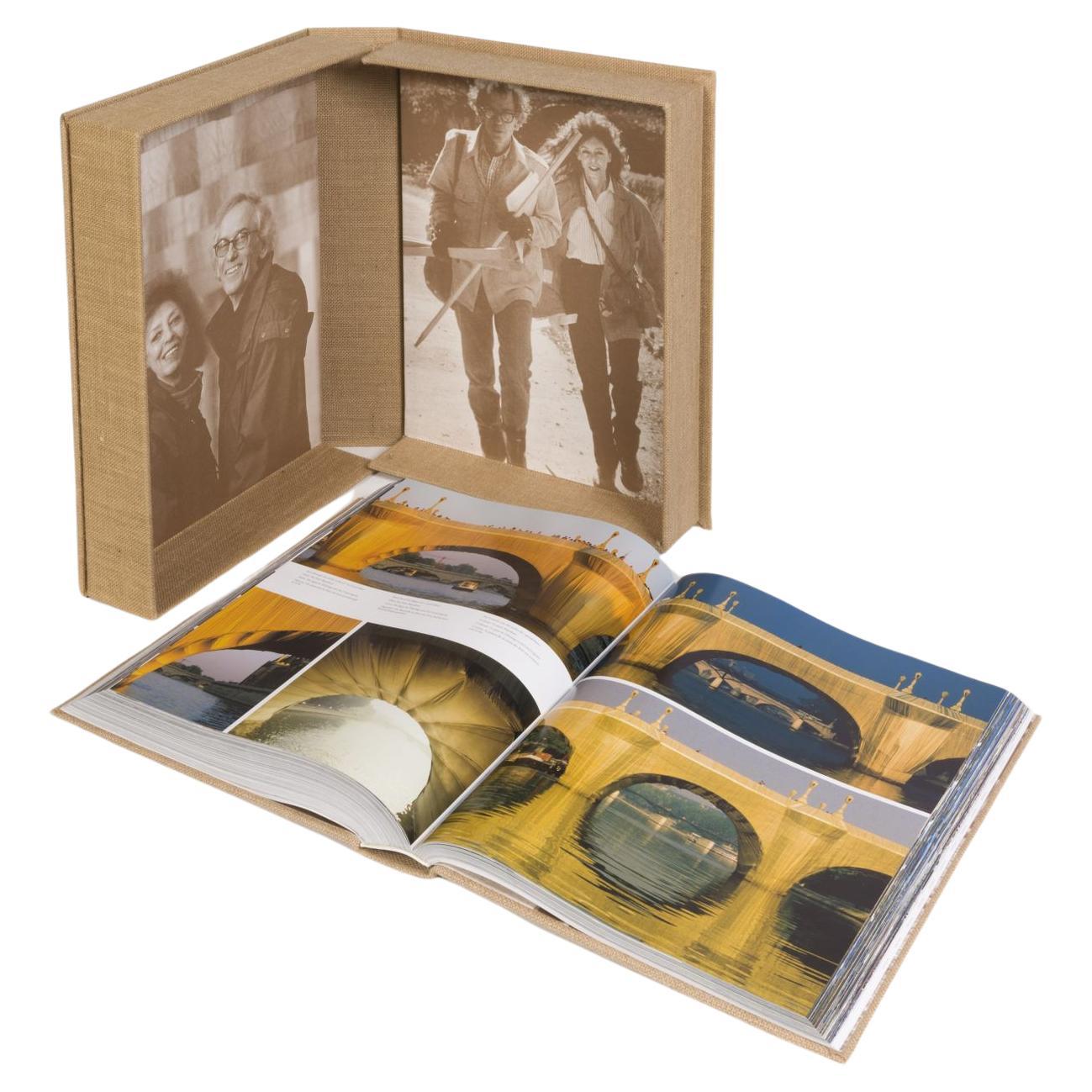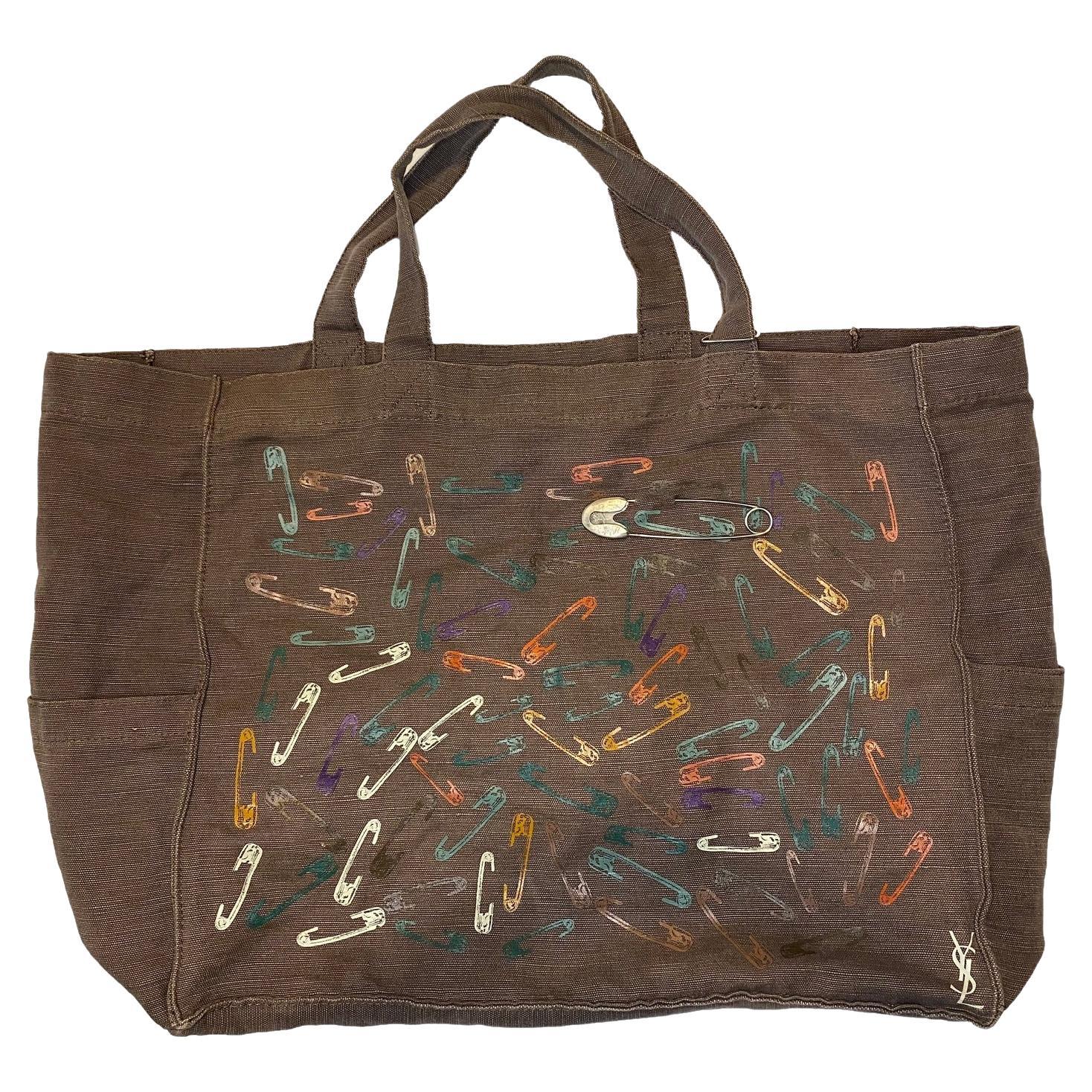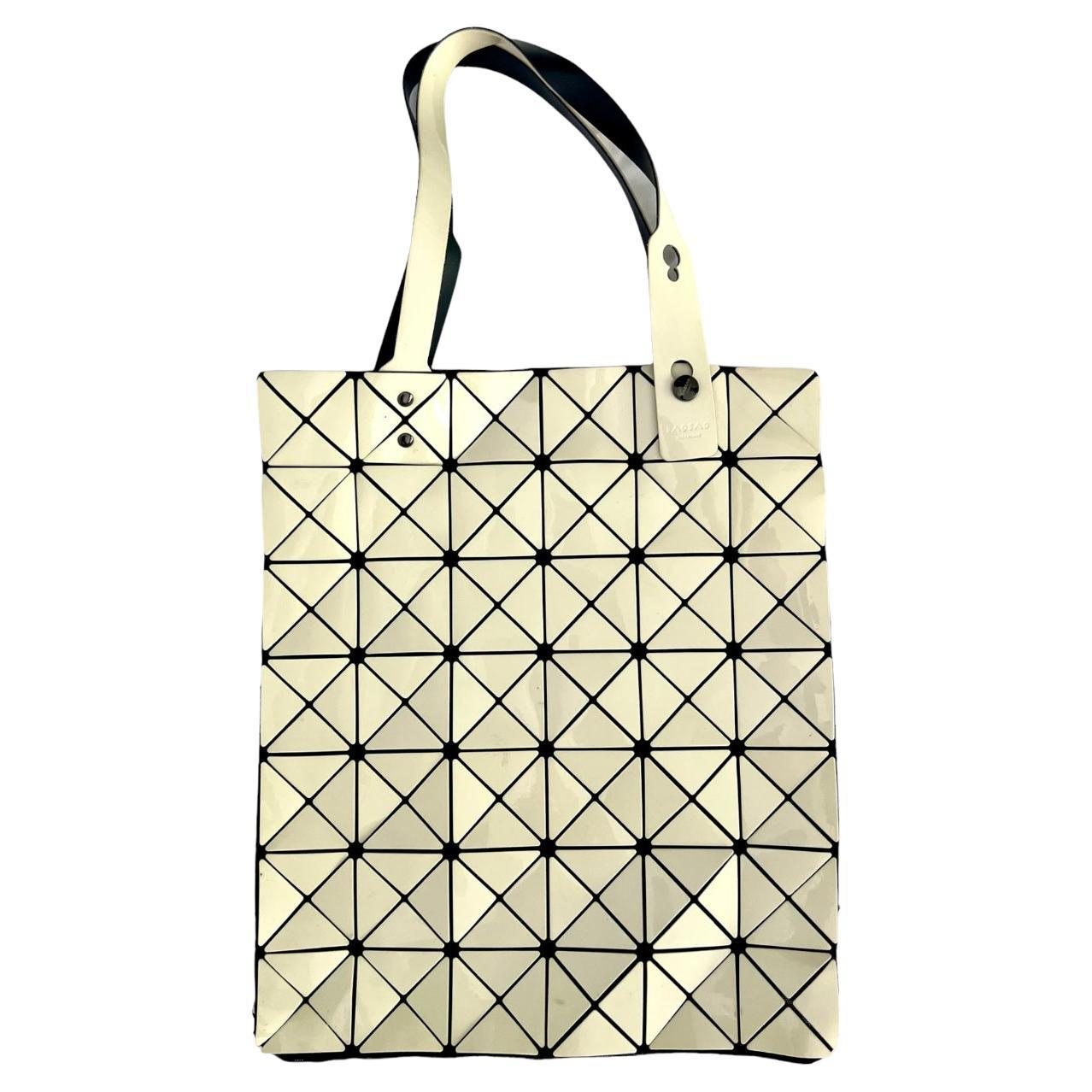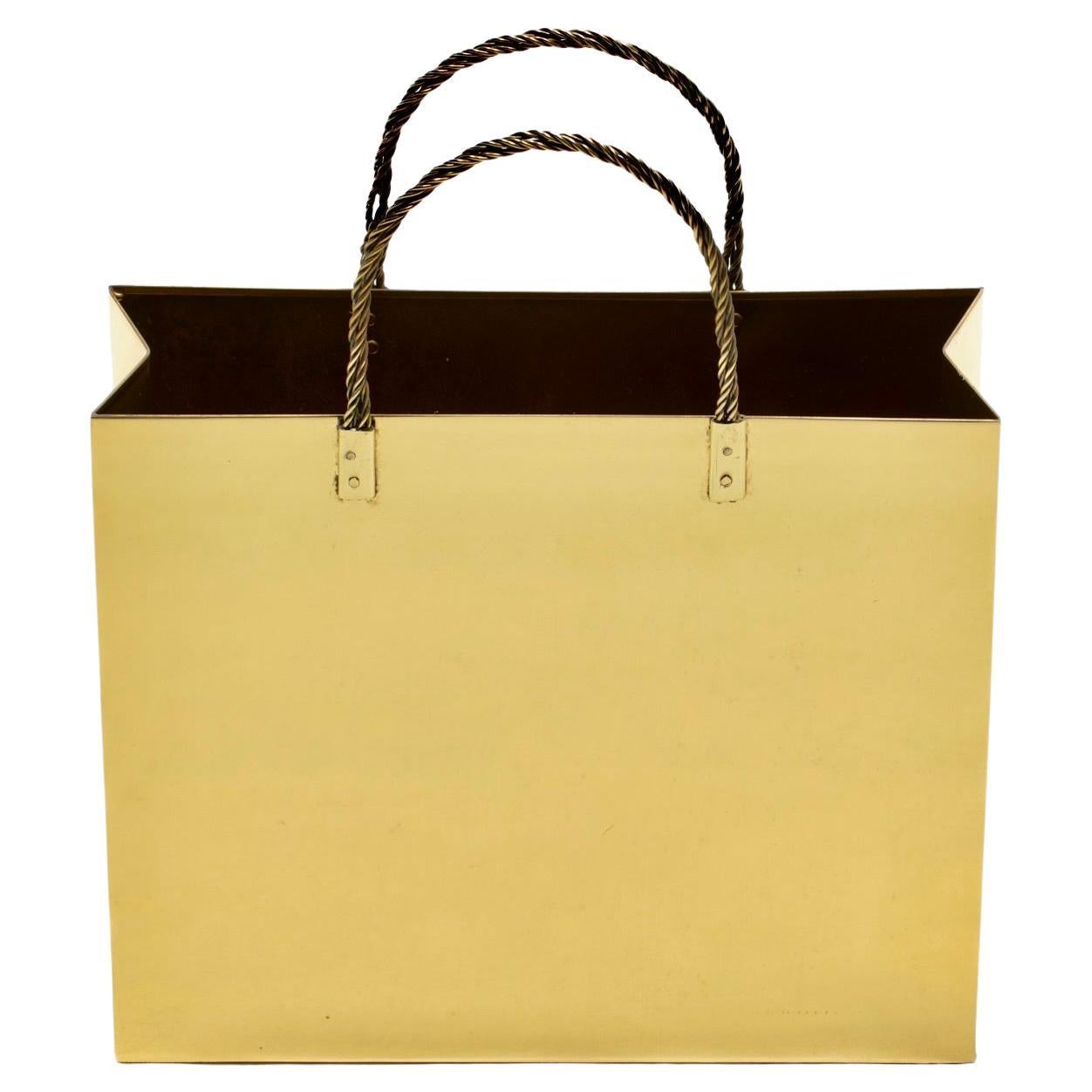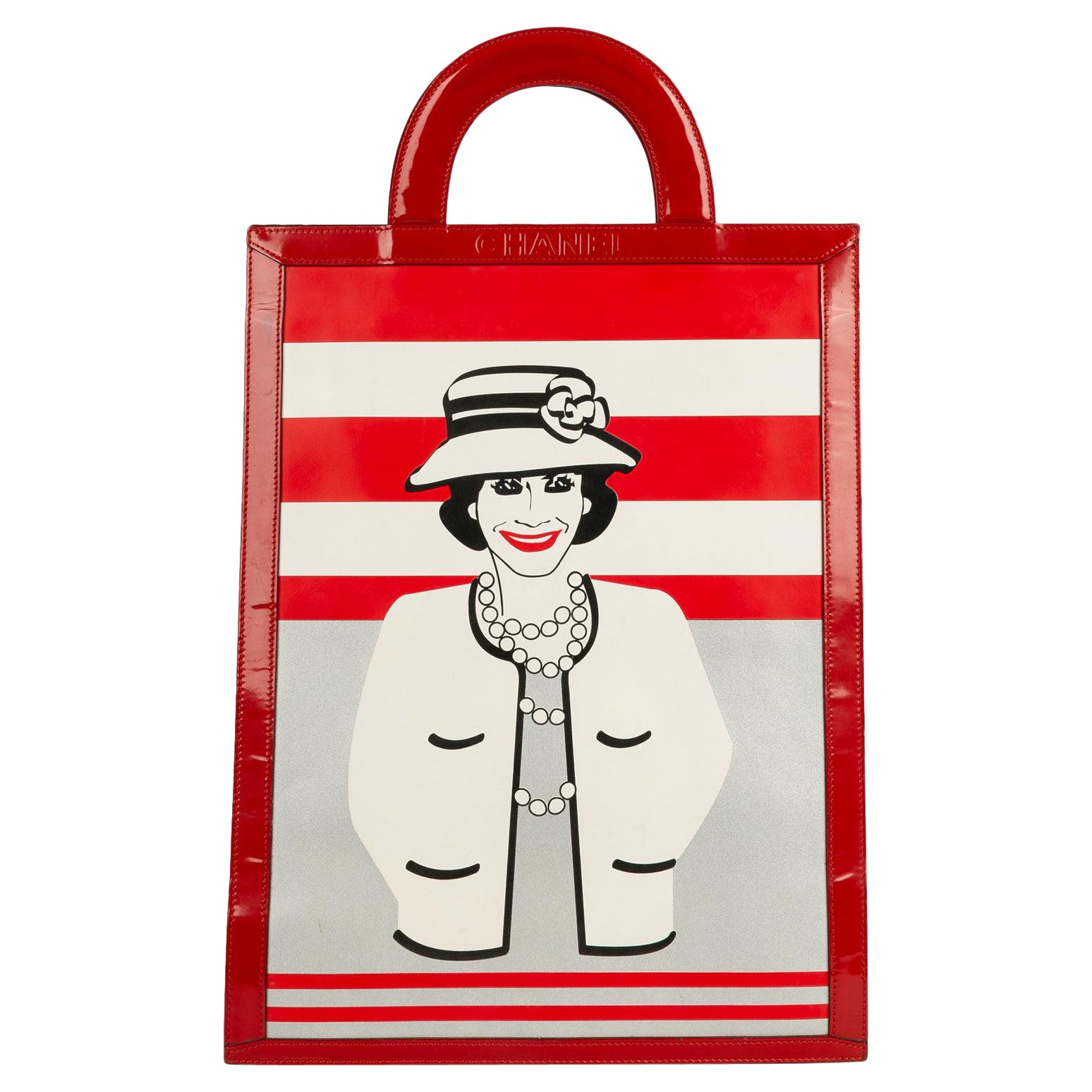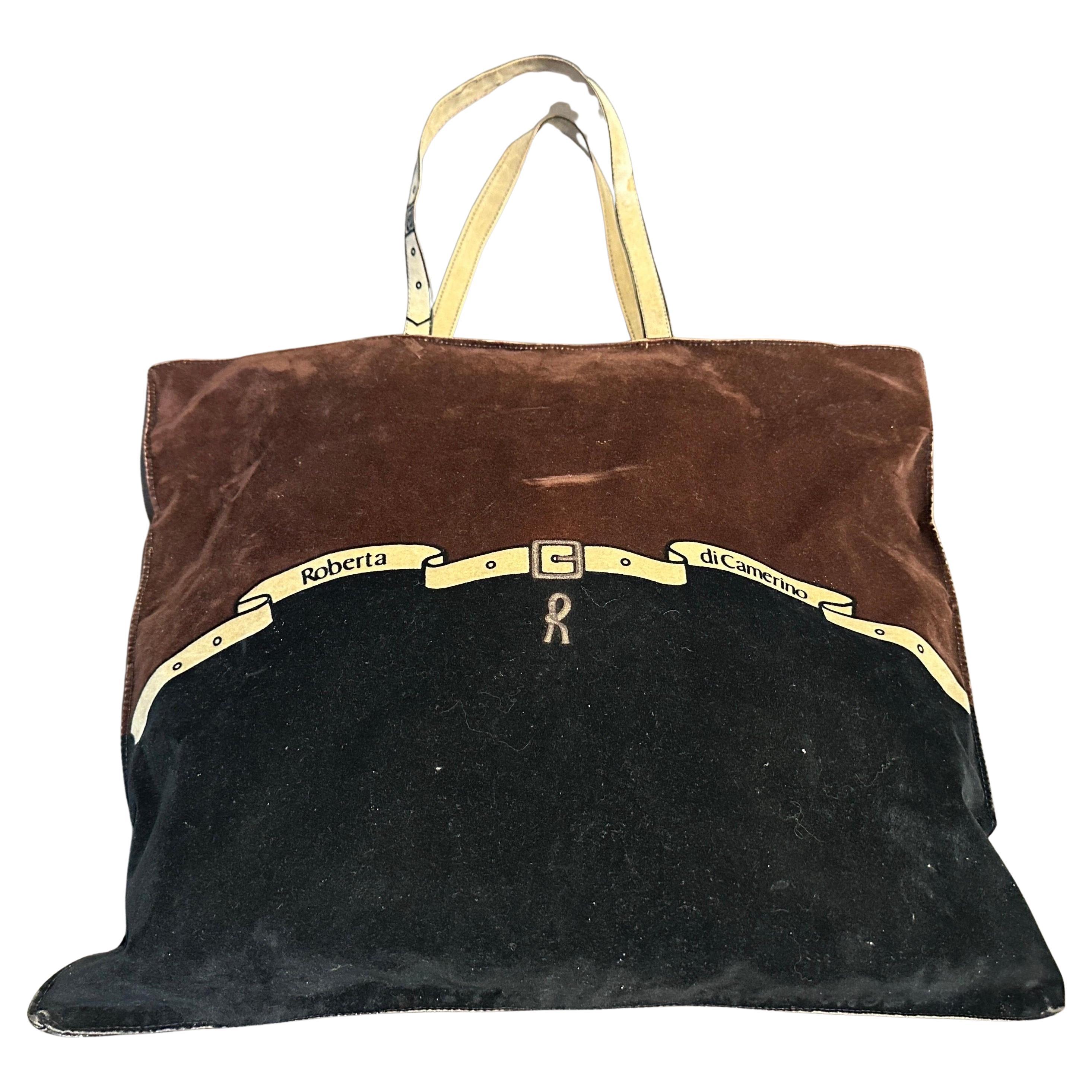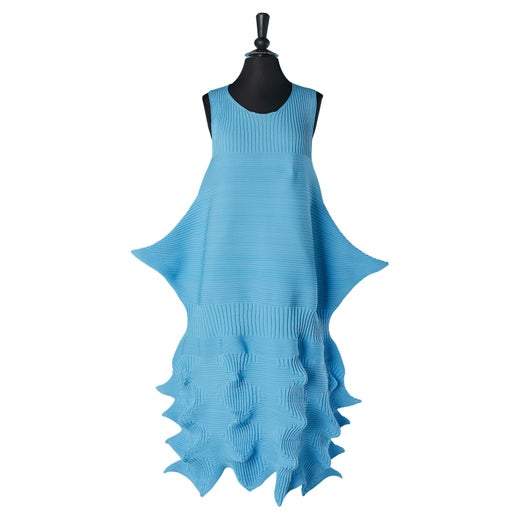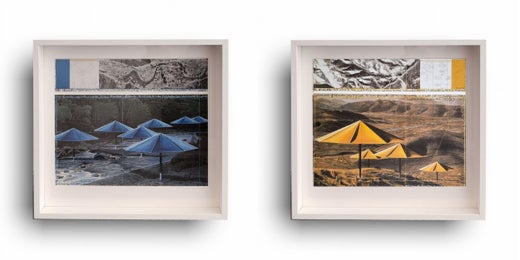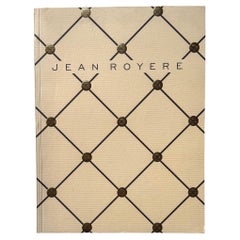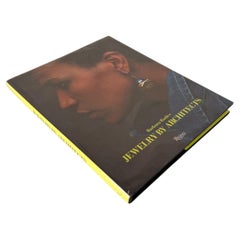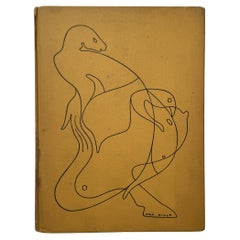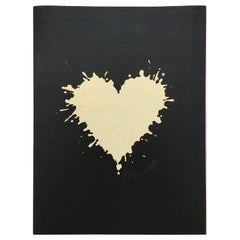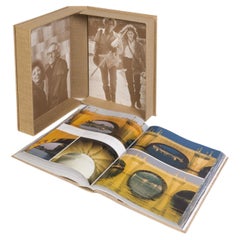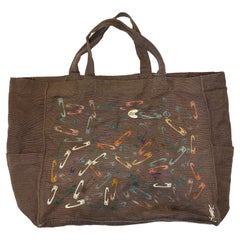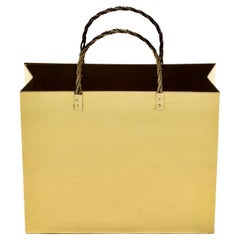Jeanne-Claude Memorial Tote Bag (With Book and Ephemera)
About the Item
- Creator:Issey Miyake (Designer),Christo and Jeanne-Claude (Author)
- Dimensions:Height: 12.5 in (31.75 cm)Width: 10.5 in (26.67 cm)Depth: 0.75 in (1.91 cm)
- Style:Modern (Of the Period)
- Materials and Techniques:
- Place of Origin:
- Period:
- Date of Manufacture:2010
- Condition:Wear consistent with age and use. In excellent condition all around--basically untouched.
- Seller Location:New York, NY
- Reference Number:1stDibs: LU828545768862
Issey Miyake
From the prismatic Pleats Please collection to the modular, three-dimensional garments crafted from recycled plastic bottles in his Reality Lab, the captivating fashions by Japanese designer Issey Miyake are all about movement.
Born in Hiroshima, Miyake studied graphic design at Tama Art University in Tokyo before relocating to Paris in 1965, where he studied couture and cut his teeth working for Guy Laroche and Hubert de Givenchy. In 1969, he moved to New York, where he worked for Geoffrey Beene. He returned to Tokyo in 1970 to found his first solo venture, the Miyake Design Studio. It wasn’t until the 1990s, though, that the designer had his breakthrough moment with experimentations in pleating. Some of his earliest explorations were for choreographer William Forsythe’s Frankfurt Ballet Company, with the 1991 performance of The Loss of Small Detail featuring costumes Miyake designed with pleats that complemented and transformed the movement of the dancers.
Though long a staple in couture — from delicate women’s skirts to men’s suit pants — pleats took on new life in Miyake’s hands. By using a heat press to cure his fabrics after his garments are stitched, Miyake was able to maintain the accordion structure of the pleat, turning a series of folds into sculptural, often futuristic forms unbound by the shape of the human body. In 1993, Miyake debuted “garment pleating” in his Pleats Please line, in which the clothes are constructed at a size that is larger than what is intended for the finished product. The pleats are then created — a process that involves folding and ironing and is separate from the joining of seams — and individual pieces are subsequently hand-fed into a heat press. The pleats are permanent and the garments can be worn and washed without losing their shape.
Miyake’s pleats run the gamut in scale, which enabled him to evoke dramatic, sharp silhouettes and flowy movements in equal measure. In essence, he created an entirely new material whose iterations are infinite — a feat of technology as much as fashion.
Other innovations include Miyake’s 1997 Just Before collection, which introduced a series of tube-knit dresses that could be cut as desired, reducing both work and resources. His Reality Lab now investigates new materials, such as a fully recycled polyester. Miyake’s prowess, in fact, captured another iconic figure in the tech world: Steve Jobs, for whom the designer made hundreds of identical black turtlenecks, the late Apple founder’s sartorial signature.
Find a collection of vintage Issey Miyake day dresses, jackets, shirts and other clothing on 1stDibs.
Christo and Jeanne-Claude
Motivated solely by a mission to spread joy and celebrate beauty through their work, Christo and Jeanne-Claude (1935–2020; 1935–2009) created riveting large-scale public art installations that pushed ephemeral art to an entirely unprecedented new level. While the pair created prints, photography and a range of other types of art, they’re best known for their installations — working with a combination of textiles and industrial materials, Christo and Jeanne-Claude created colossal site-specific sculptures and other projects that frequently included wrapping monuments, walkways and even coastlines in reams of fabric in order to draw attention and encourage viewers to experience familiar objects and places in entirely new ways.
Christo and Jeanne-Claude frequently incorporated nature’s forces into their works, creating billowing fence lines, enormous inflatable free-standing structures and colorful floating walkways. Partners in life and art, the pair designed installations that often took years or even decades to realize and lasted for only days or weeks. Christo and Jeanne-Claude’s preparatory works and detailed drawings and collages are today a testament to their intricate ephemeral masterpieces and legacy.
Christo and Jeanne-Claude’s stories, incredibly, began on the exact same day — on June 13, 1935, Christo Vladimirov Javacheff was born in Gabrovo, Bulgaria, and on the very same day in Casablanca, Morocco, Jeanne-Claude Denat de Guillebon was born. While Jeanne-Claude received a broad education and a baccalauréat in Latin and philosophy, growing up in France, Switzerland, Morocco and Tunisia, Christo studied art from the age of six years old. He went on to study painting, drawing, architecture and sculpture at the National Academy of Art in Sofia before leaving Bulgaria to escape the Hungarian Revolution.
Christo spent time in Prague before a brief stint at the Vienna Academy of Fine Arts, moving on then to Geneva and ultimately France. He made money by painting portraits for wealthy families. After being hired by Jeanne-Claude’s mother to paint three portraits of her, Christo met his future wife and collaborator. The pair created their first environmental installation, Dockside Packages and Stacked Oil Barrels, in 1961.
Together, Christo and Jeanne-Claude pursued increasingly ambitious projects, proposing to wrap everything from trees in Wrapped Trees, Foundation Beyeler and Berower Park, Riehen, Switzerland, 1997-98 to important public buildings including the Wrapped Reichstag, Berlin, 1971–95. They also created free-standing abstract sculptures such as the 5,600 Cubicmeter Package, billowing curtains such as Valley Curtain, Rifle, Colorado, 1970–72, and proposed installations in locations as far-flung as Dubai and Japan. These projects and others have been linked to the Pop art-adjacent nouveau réalisme movement.
Classically trained in drawing, Christo created preparatory sketches and collages for the projects, selling his artwork to independently fund the monumental temporary installations the pair erected. Meanwhile, Jeanne-Claude advocated for the pair’s artwork, speaking at public forums, sending proposals to municipal governments, and using her unique combination of compelling charm and stoic stubbornness to get their projects approved.
Devoted to their ideals of spreading joy and beauty, the pair accepted no commissions or commercial collaborations — all their installations were funded purely by the sale of their preparatory art. The last of their realized urban works, that 2005 project invited New Yorkers to go for a glorious walk through 7,503 saffron-fabric-draped portals along the pathways of Central Park. More than 4 million people did.
Christo’s wrapped sculptures, which he began making early in his career, as well as his preparatory works, are held in the permanent collections of museums and other institutions including the Smithsonian American Art Museum, the National Gallery of Art, the Museum of Contemporary Art and the Centre Pompidou. Jeanne-Claude died in 2009, and Christo continued to realize the pair’s planned projects until his own passing in 2020.
Find original Christo and Jeanne-Claude photography, mixed media works, sculptures and prints on 1stDibs.
- ShippingRetrieving quote...Shipping from: New York, NY
- Return Policy
More From This Seller
View AllEarly 2000s American Mid-Century Modern Books
Paper
Vintage 1980s American Post-Modern Books
Paper
Vintage 1940s American Modern Books
Paper
1990s German Minimalist Books
Paper
Vintage 1950s Italian Mid-Century Modern Books
Paper
Vintage 1970s English Modern Prints
Polyester, Paper
You May Also Like
2010s German Books
Paper
Early 2000s Tote Bags
21st Century and Contemporary Japanese Shoulder Bags
Vintage 1970s Italian Hollywood Regency Magazine Racks and Stands
Brass
